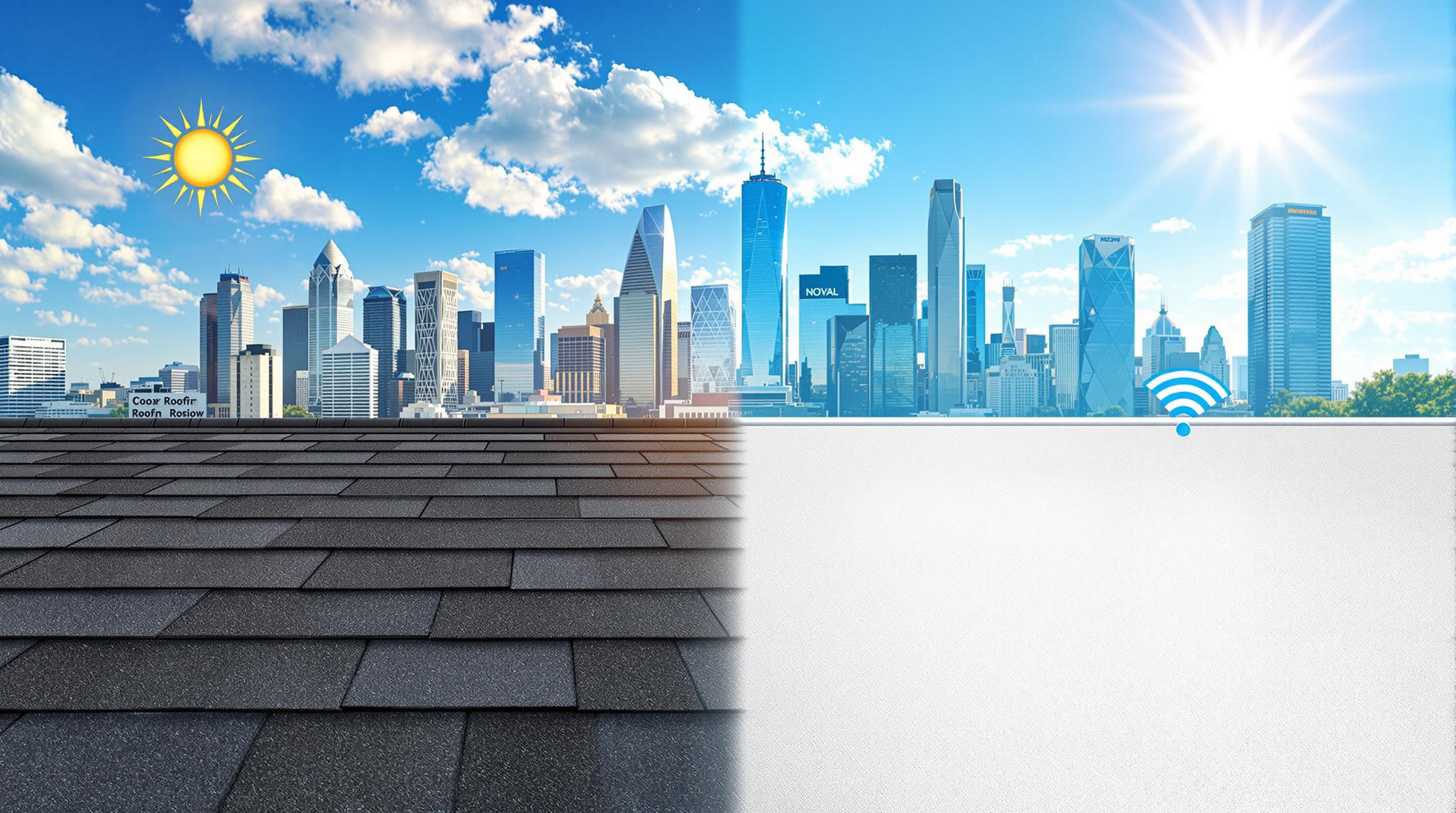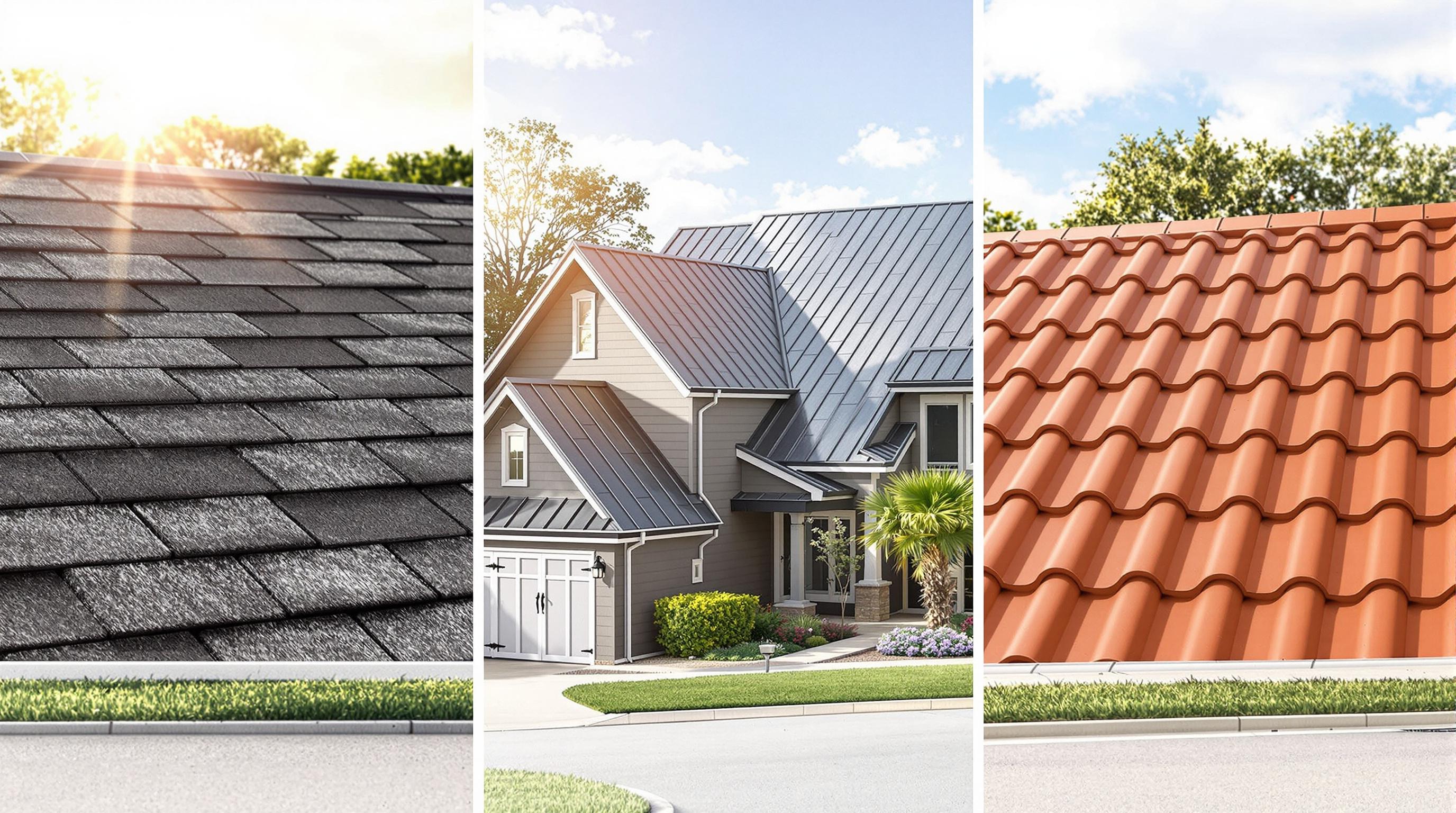- Roof Surface: Look for wear, seam issues, and ponding water.
- Structural Integrity: Check for sagging, hidden moisture, and insulation problems.
- Flashing & Vents: Inspect seals around chimneys, HVAC units, and skylights.
- Drainage Systems: Ensure gutters and drains are clear and aligned.
- Interior Signs: Spot water stains or damage inside the building.
Professionals use tools like infrared cameras and moisture meters to detect hidden issues. Inspections should happen twice a year - before and after severe weather seasons - to prevent costly repairs and maintain compliance with local building codes. Always hire certified contractors for accurate evaluations and legal adherence.
What to Expect During A Commercial Roof Inspection
Detailed Checklist for Commercial Roof Inspections
Inspecting a commercial roof thoroughly is crucial to catch problems early, protect your property, and avoid expensive fixes. Here's what professionals focus on during an inspection:
Roof Surface and Membrane Checks
Inspectors start at the edges and work inward, looking for:
- Signs of wear or aging on the surface
- Membrane issues, like separation at seams
- Blistering or bubbling in roofing materials
- Ponding water that doesn't drain properly
- Physical damage to the substrate
Structural Integrity and Roof Deck
Hidden moisture can weaken the roof deck, so tools like moisture meters and infrared cameras are used [2]. Inspectors check for:
- Deformation or sagging in the structure
- Evidence of water infiltration
- Temperature changes signaling insulation problems
- Stability of the deck's attachment
- Overall condition of the support system
Flashing, Vents, and Penetrations
Flashing and penetrations are common trouble spots for leaks. Inspectors examine:
- Flashing around chimneys, edges, and other areas
- The seals on HVAC units
- Connections for vent pipes
- Skylight edges
- Mounting points for rooftop equipment
Gutters and Drainage Systems
Proper drainage is essential to prevent water damage. Key areas include:
- Alignment of gutters
- Functioning downspouts
- Clear drain covers and strainers
- Evidence of standing water
- Any blockages in drainage paths
Interior Signs of Water Damage
Inside the building, inspectors look for [1]:
- Stains, discoloration, or damp spots on walls and ceilings
- Any structural damage caused by water
Inspectors document everything with photos and detailed notes, providing repair suggestions and cost estimates. Up next, we'll dive into the advanced tools and techniques that make these inspections more effective.
Tools Used in Roof Inspections
Infrared Cameras and Moisture Meters
Infrared cameras are great for spotting temperature changes that could indicate leaks or insulation problems. They can:
- Find trapped moisture within roofing materials
- Spot areas of heat loss, which can impact energy efficiency
- Pinpoint potential leaks before they cause visible damage
When paired with moisture meters, these tools provide a clearer picture of water content and help diagnose moisture-related problems with precision.
Core Sampling Tools
Core sampling involves taking small sections of the roof to analyze its layers. This process helps inspectors understand the roof's materials, current condition, and repair history. It’s also useful for estimating the roof's age and how much longer it might last.
Safety Gear for Inspections
Safety gear is just as important as the tools themselves, ensuring inspectors can work without unnecessary risks. Key protective equipment includes:
- Fall Protection Systems: OSHA-compliant harnesses and anchor points
- Non-slip Footwear: Boots designed for better grip on slippery surfaces
- Personal Protective Gear: Hard hats and safety glasses to guard against potential hazards
For larger commercial roofs, thermal imaging drones are often used. These drones can quickly scan expansive areas, creating thermal maps to highlight problem spots. High-resolution images from the drones also help document roof conditions, making it easier to plan maintenance.
With these tools and equipment, inspectors can thoroughly assess and document roof issues, ensuring nothing is overlooked.
sbb-itb-df3c0e6
Steps in the Commercial Roof Inspection Process
Preparing for the Inspection
Before stepping onto the roof, professional inspectors gather key documents like building plans and past inspection reports. These materials help pinpoint potential trouble spots and provide a comparison point for the current inspection. Maintenance records are also reviewed to understand the roof's history and identify recurring issues that need attention.
Weather plays a big role in scheduling an inspection. Once everything is set, the process moves to the roof for a thorough evaluation.
Conducting the Exterior and Rooftop Inspection
Inspectors follow a structured method, starting at the roof's perimeter and working toward the center [1]. Key areas of focus include:
- Surface Condition: Looking for cracks, blisters, or seams that may have lifted.
- Structural Elements: Checking the roof deck and supporting structures for stability.
- Drainage Systems: Ensuring gutters, drains, and pipes allow proper water flow.
- Metal Components: Examining flashing, vents, and other metal parts for damage or wear.
Core samples are taken from specific spots to assess the roof's materials and overall condition [4]. After the physical inspection, all findings are carefully documented to help determine the next steps.
Creating Reports and Making Recommendations
The data collected during the inspection is compiled into a detailed report for property owners.
"A building roof inspection is serious business and should be completed by a roofing contractor" [1].
These reports include written descriptions, photos, repair priorities, cost estimates, and maintenance suggestions. They serve as a clear guide for both immediate fixes and long-term care.
Regulations and Compliance in Roof Inspections
Roof inspections aren’t just about spotting problems - they must also meet legal and safety requirements.
Permit Needs for Roof Repairs
In Houston, major roof repairs or modifications require permits. Property owners should hire licensed contractors who understand local codes to manage permits and ensure everything is up to standard.
Adhering to Building Codes
Commercial property owners must follow local rules and broader industry standards. The International Building Code (IBC) and International Residential Code (IRC) provide key guidelines that influence inspections and repairs.
Here are some key requirements:
| Requirement | Specification |
|---|---|
| Proper slope for drainage | 1/4 inch per foot |
| Inspector qualifications | City-certified experts |
Additionally, the National Roofing Contractors Association (NRCA) offers guidelines for thorough evaluations and proper documentation.
To stay compliant, property owners should:
- Check contractor credentials: Make sure they’re licensed, insured, and certified by reputable organizations.
- Keep detailed records: Save all inspection and repair documentation.
- Stay updated: Regularly review the City of Houston Building Department’s regulations.
Failing to comply can lead to fines, penalties, and even legal liability.
Conclusion: Maintaining Roof Health with Regular Inspections
Regular roof inspections play a key role in keeping your building durable and energy-efficient. Research shows that a well-maintained roof with proper insulation can cut heating and cooling costs by up to 30% [5].
To get the most out of roof inspections, property owners should:
- Plan for bi-annual checks: Schedule inspections twice a year, especially after severe weather, and keep thorough records for warranties and compliance [1][3].
- Keep detailed documentation: Record all inspections and repairs to ensure compliance and maintain warranty coverage [3].
- Hire licensed professionals: Work with certified contractors familiar with local building codes and regulations [1].
According to the National Institute of Building Sciences, establishing a consistent inspection routine can lower energy expenses by about 15% over a building's lifetime [5].
Professional inspectors often use advanced tools like infrared cameras to uncover hidden issues early, enabling timely repairs. Beyond protecting your roof, regular inspections help you stay aligned with local regulations, reducing the risk of legal or financial trouble. This proactive approach not only extends the life of your roof but also minimizes the chances of expensive damage.
FAQs
How do you inspect a commercial roof?
Inspecting a commercial roof involves several key steps:
- Interior Check: Look for signs of water damage, such as stains or mold inside the building. [3]
- Safety Measures: Ensure proper safety gear is used, including harnesses and personal protective equipment (PPE). [2]
- Roof Surface Inspection: Examine the membrane for any visible damage or wear. [1]
- Structural Evaluation: Assess the integrity of the roof deck and support systems. [1]
- Specialized Testing: Use tools like infrared cameras and moisture meters to detect hidden issues. [2]
How to inspect a commercial roof?
Professional roof inspectors follow a detailed process, focusing on specific components to ensure a thorough evaluation [4][6]:
| Component | Focus Area | Tools Used |
|---|---|---|
| Surface/Membrane | Look for damage or wear | Visual inspection tools |
| Structure | Check deck stability | Core sampling tools |
| Moisture | Detect hidden leaks | Infrared cameras |
| Drainage | Assess water flow issues | Visual checks |
| Safety Systems | Inspect access points | Safety equipment |
"Commercial roof inspections should be conducted by trained professionals who understand how roofs age and can identify various types of roof problems." [1]
Scheduling inspections every six months and keeping detailed records can help prevent costly repairs and extend the roof's lifespan. [1][3]



